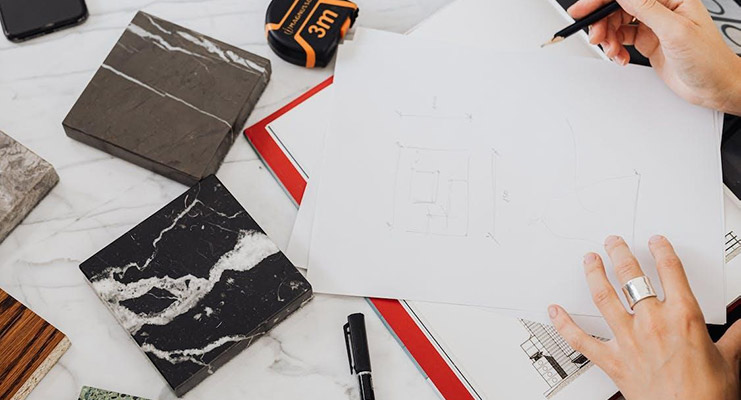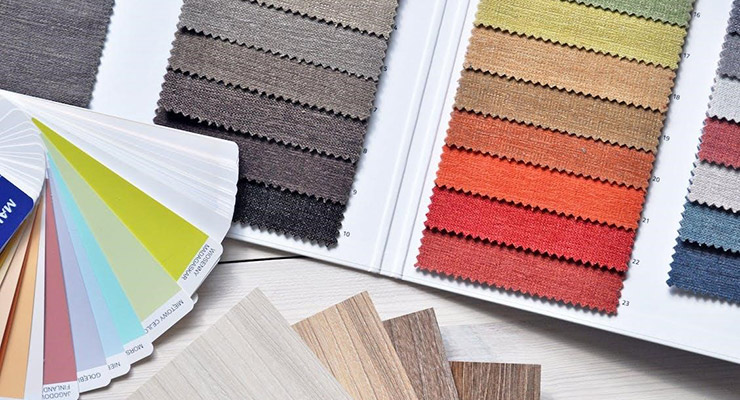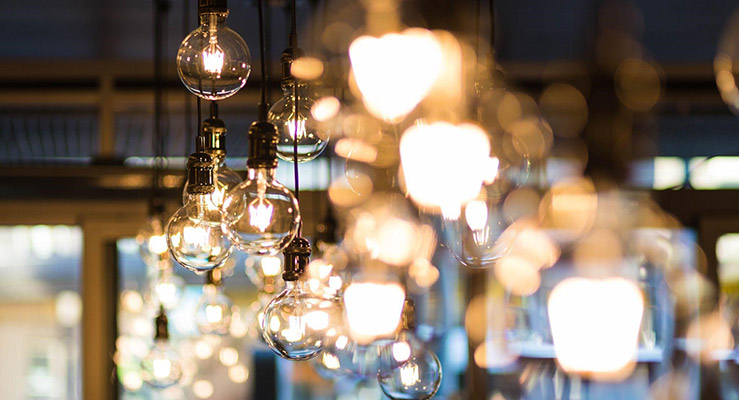The Basics & Principles of Interior Design
Learn the basic elements of interior design and how they can help you create a beautiful and functional living space. Read the 7 principles of interior design!

The Basics & Principles of Interior Design
Interior design is both an art and a science. It's about creating a space that is not only aesthetically pleasing but also functional and comfortable. Whether you're decorating a new home, renovating an old one, or simply looking to refresh your space, understanding the basics and principles of interior design can help you create a beautiful and cohesive space that reflects your personality and style. Here are some essential ideas to keep in mind:
1. Functionality
The first and most important principle of interior design is functionality. Every room in your home should serve a specific purpose, whether it's cooking in the kitchen, relaxing in the living room, or sleeping in the bedroom. When planning your interior, make sure to consider the function of each space and organize it in a way that maximizes its potential.
For example, arrange your living room furniture in a way that promotes conversation and comfortable seating, and make sure your kitchen has ample counter space and storage for cooking and entertaining
2. Balance
The principle of balance is about creating a sense of equilibrium in a room, achieved by placing objects of equal visual weight on both sides of the space. This can be achieved through symmetrically arranging furniture, artwork, or other decorative objects.
However, balance doesn't always have to be symmetrical. You can also create balance through contrast, by pairing objects of different shapes, colors, or textures that complement each other.
3. Scale and Proportion
When it comes to interior design, scale and proportion are key. The size and placement of furniture and decorative objects have a significant impact on the overall look and feel of a room.
For example, a large sofa in a small room can make the space feel cramped and cluttered, while tiny decor pieces in a large room can feel lost and insignificant. Be mindful of the scale and proportion of each object in your space, considering how it works with the room as a whole.

4. Color
Color is one of the most powerful tools in interior design. It can dictate the mood, atmosphere, and visual flow of a room. When choosing a color scheme for a room, consider the existing colors in the space and create a palette that complements or contrasts these existing features.
For example, if you have a bold patterned wallpaper or rug, choose colors that complement these existing patterns. You can also use color to highlight certain features of a room, such as painting an accent wall or choosing colorful curtains or throw pillows.

5. Texture
The texture is another important element of interior design. Varying textures can add dimension and interest to a space, adding warmth, coziness, or even sophistication. Consider using different textures through materials like wood, stone, metal, and fabric to create a tactile feel in a room.
For example, you can layer different textures using a variety of throw pillows, blankets, rugs, and curtains. The interplay between rough and smooth, soft and hard, and light and dark textures can create a sense of depth and richness in the space.
Read also: Easy Steps to Create Your Home Library.
6. Proximity
The principle of proximity refers to the relationship between different objects and features in a space. It's about grouping similar objects together to create a unified and harmonious space.
For example, group similar objects like books, candles, or photos together in a defined area to create a cohesive focal point. Similarly, you can create zones in larger rooms by arranging furniture in conversation areas or by using area rugs to define different spaces.
7. Lighting
Lighting is a crucial aspect of interior design. It can affect everything from the mood to the functionality of a space. Natural light is always the best place to start, as it can create a sense of openness and bring out the true colors of your decor.
However, artificial lighting is also important, particularly in areas where natural light is limited. Consider using a combination of overhead, task, and ambient lighting to create a balance that suits your needs.
In conclusion, understanding the basics and principles of interior design can guide you in creating a beautiful, functional, and comfortable space that reflects your personal style.

By considering factors like functionality, balance, scale and proportion, color, texture, proximity, and lighting, you can take your interior design game to the next level. Whether you're decorating a new home or simply refreshing an old one, these principles can help you create a home that you'll love to live in. Contact Mimari Expert Architectural Design to get the best interior design experience according to these principles today!
Some Of Our Works And Case Studies For Clients
Schedule a free consultation
You can get your free consultation by communicating with us.

